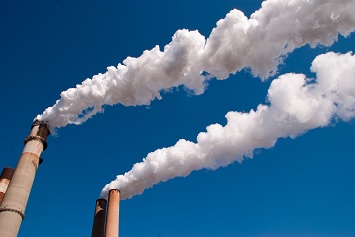As the United States prepares for President-Elect Joe Biden to take office on Inauguration Day, January 20, 2021, the Trump administration continues to take numerous administrative actions on climate, energy, and environmental issues. The State Energy & Environmental Impact Center at the New York University School of Law created a “Midnight Watch” website to track these developments.
The following article provides details about recent actions to date.
Climate Change
GHG emissions standards for airplanes
The first-ever greenhouse gas (GHG) emissions standards for airplanes were proposed by the EPA on August 20, 2020. White House review of the final rule began December 2, 2020. “Aircraft covered by the proposed rule account for 10 percent of all U.S. transportation … GHG emissions and 3 percent of total U.S. GHG emissions,” according to the EPA. The final rule will essentially have no impact on actual aircraft emissions, according to comments filed in October 2020 by state attorneys general.
Clean Air
NAAQS for ozone
In a surprising decision, the EPA proposed retaining existing National Ambient Air Quality Standards (NAAQS) for ozone, although there is ample scientific evidence that the existing NAAQS established in 2015 should be lowered. State attorneys general found significant flaws in the process the EPA used to reach its decision. The White House began its review of the final rule on December 8, 2020.
NAAQS for particulate matter
On December 7, 2020, the EPA announced it would retain existing NAAQS for fine particulate matter (PM2.5) and coarse particulate matter (PM10) for the next 5 years. In areas meeting existing standards, PM2.5 is associated with 45,000 annual deaths, according to comments filed by state attorneys general in June 2020. The comments also stated that the EPA’s decision wrongly asserted “no environmental justice issues” were raised “despite significant evidence that communities of color and lower-income communities are disproportionately exposed to and harmed by PM pollution,” as published by the Midnight Watch project.
“Agency scientists had recommended lowering the annual particulate matter standard to between 8 and 10 micrograms per cubic meter in a draft report last year, citing estimates that reducing the limit to 9 could save between 9,050 and 34,600 lives a year,” according to The Washington Post.
Sell-Through Period for Noncompliant Wood Heaters
The EPA published a proposed rule to allow the continued sale of wood-burning heaters, boilers, and forced-air furnaces that do not comply with emissions standards. In the face of numerous objections in the comments period, the EPA reportedly notified industry groups such as the Hearth, Patio, and Barbecue Association that it would not finalize the proposed rule.
Clean Energy and Energy Efficiency
Waiving energy-efficiency test procedures
A final rule is expected to be published soon allowing appliance manufacturers to seek waivers from mandated energy-efficiency testing procedures. The Energy Department’s proposed changes were published in May 2019 and included a 6-month grace period during which compliance testing can be avoided for an additional 6 months in the event the initial waiver is denied. The White House completed its review of the proposed rule change on November 5, 2020, according to the Midnight Watch Project.
Efficiency carve-out for fast-cycle washers and dryers
A new product class for fast-cycle clothes washers and dryers was proposed by the Energy Department that would be exempt them from energy-efficiency standards in August 2020. Review of the final rule was completed on December 2, 2020, by the White House, with publication expected to occur before Inauguration Day. “Such a relaxation of standards violates Energy Policy and Conservation Act’s (EPCA) anti-backsliding provision that prohibits the department from establishing a standard that increases maximum allowable energy use, as state attorneys general warned in comments filed in October 2020,” according to the Midnight Watch Project.
Special treatment for furnaces and water heaters
On December 4, 2020, the White House began its review of an Energy Department proposed rule that would deem “a residential gas furnace or commercial water heater’s compatibility with existing venting systems a ‘performance-related feature,’” the Midnight Watch project says. State attorneys general noted that “this interpretation of ‘feature’ is inconsistent with EPCA” in their comments.
Public Lands
Arctic refuge seismic surveying and lease sale
The Bureau of Land Management (BLM) published a notice of sale on December 7, 2020, announcing an Arctic Refuge lease sale scheduled for January 6, 2021. The notice of sale was published without the process mandated by regulation. “Taking these steps out of sequence—publishing a notice of sale ten days prior to the closing of the public comment period for BLM’s call for nominations—is highly unusual and potentially unlawful,” according to the Midnight Watch project. “The relevant regulations require that a ‘detailed statement of the sale, including a description of the areas to be offered for lease, the lease terms, conditions and special stipulations and how and where to submit bids shall be made available to the public immediately after publication of the notice of sale.’”
Restricting LWCF implementation
On November 9, 2020, Interior Secretary David Bernhardt signed an order requiring the federal government to obtain a “written expression of support by both the affected Governor and local county or county-government-equivalent” before completing a Land and Water Conservation Fund (LWCF)-funded acquisition, meaning state and local government can block certain federal government land acquisitions. “ … [N]either the language nor the structure of the LWCF allows for states to also exercise a veto over federal conservation investment decisions,” according to the Midnight Watch project. “Both Republican and Democratic lawmakers who championed the legislation sharply criticized the order, as did conservation groups.”
Excluding Forest Service actions from NEPA reviews
A final rule allowing certain actions to proceed without a full National Environmental Policy Act (NEPA) review was published and implemented by the U.S. Forest Service on November 19, 2020. “The rule expands two existing categorical exclusions and creates six new exclusions for activities with potentially significant environmental impacts, including ‘activities related to recreation special uses, administrative sites, recreation sites, and restoration and resilience projects, along with two [categorical exclusions] for certain road management projects,’” the Midnight Watch project says.
Wildlife
Endangered Species Act (ESA): Definition of ‘habitat’
In November, the White House began its review of a proposed narrowed definition of the term “habitat” by the U.S. Fish and Wildlife Service (FWS) and National Marine Fisheries Service. “By narrowly defining habitat, the proposal threatens to ‘arbitrarily limit the Services’ ability to recover imperiled species by reducing—in some cases potentially severely—the amount and type of critical habitat that can be protected under the Act,’ as state attorneys general warned in comments filed in September 2020,” according to the Midnight Watch project.
ESA: Critical habitat designation process
On November 12, 2020, the White House began review of the final rule proposed by the FWS for changes in the process for designating critical habitat for protection under the ESA. The Midnight Watch project says critics, including comments from state attorneys general, believe the changes “skew the process in favor of development and extractive industries by giving private parties inappropriate influence over whether the Service undertakes analyses of the benefits of excluding areas from critical habitat designations, and over the information used in such analyses.”
MBTA: Elimination of prohibition on incidental take
The White House began its review of a rule proposed by the FWS redefining the scope of the Migratory Bird Treaty Act (MBTA) to no longer prohibit the incidental “take” of migratory birds on November 9, 2020. A final impact statement was released by the FWS on November 27, 2020. The act’s previous scope allowed liability for industry and developers that recklessly killed migratory birds. The impact statement is open for public review for 30 days before a decision can be issued.
Safety and Toxics
Risk assessment for EtO
A draft risk assessment was released by the EPA on November 20, 2020, for the use of ethylene oxide (EtO), a carcinogenic gas, as a fumigant to sterilize spices and medical equipment. The EPA’s risk assessment did not define a preferred specific method for determining the cancer risks associated with EtO exposure but instead provided a wide range of methods, “some of which suggest EtO’s carcinogenic potential is far lower than estimated by the EPA’s independent Integrated Risk Information System (IRIS) program,” according to the Midnight Watch program. Comments on the draft will be accepted until January 19, 2021.
Superfund financial assurance requirements
Final rules limiting the financial responsibilities of the electric power plants; petroleum and coal products manufacturing; and chemical manufacturing industries were issued by the EPA on December 2, 2020.
 Regulatory Processes
Regulatory Processes
Changes to cost-benefit analysis of CAA regulations
The White House completed its review of the final rule proposing drastic changes to its cost-benefit analyses of environmental regulations under Clean Air Act (CAA) requirements on December 7, 2020. The final rule went into effect on December 9, 2020. The rule establishes a “one-size-fits-all methodology” for the analyses and prevents co-benefits considerations, which include results from pollution reductions that are not the direct subject of the regulation. State attorneys general objections include that “failing to consider co-benefits not only disregards fundamental economic principles but violates EPA’s statutory duties and undercuts the agency’s core mission to protect human health and the environment,” according to the Midnight Watch project.
“Today’s action ensures that EPA is consistent in evaluating costs and benefits when developing broad-reaching policies that affect the American public,” said EPA Administrator Andrew Wheeler in a press release issued by the Agency. “Thanks to President Trump’s leadership, we are ensuring that future rulemakings under the Clean Air Act are transparent, fair, and consistent with EPA governing statutes, the American public deserves to know the benefits and costs of federal regulations.”
Changes to NEPA analysis of transportation infrastructure projects
Proposed changes to NEPA procedures were submitted by the Transportation Department on November 23, 2020. According to NEPA regulations, before funds being released for transportation infrastructure construction projects, an analysis of potential environmental impacts must be conducted. Most transportation infrastructure construction projects receive a portion of funds from the federal government, meaning they are subject to NEPA regulations.
“The proposal would roll back the Transportation Department’s NEPA requirements to mirror the Council on Environmental Quality’s July 2020 final rule that eliminated several key, long-standing NEPA obligations—including, for example, the requirement to analyze climate-related and other ‘cumulative’ and ‘indirect’ environmental effects,” says the Midnight Watch project. “The changes would limit the ability of federal agencies, including the Transportation Department, to comprehensively evaluate the impacts of their actions on the environment and public health, as state attorneys general warned in comments filed in March 2020.”
The proposed changes will accept comments until December 23, 2020. This may provide time for publication of the final rule before Inauguration Day.


